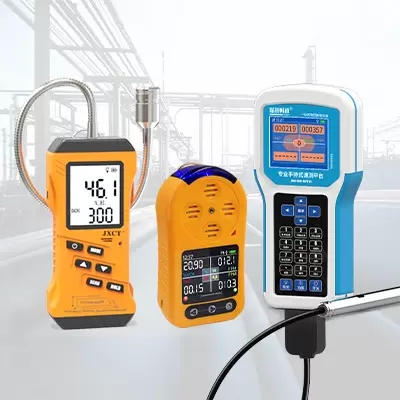Background:
Solid CO2 sensor is an important environmental monitoring instrument. Its principle is to use the chemical reaction principle of substances to convert CO2 gas into electrical signals, so as to achieve the measurement of CO2 concentration in the environment. Solid CO2 sensors are widely used in environmental monitoring, energy monitoring, health monitoring and other fields with high precision, fast response speed and good stability.
Principle of solid CO2 sensor:
The principle of solid CO2 sensor is to use CO2 and solid electrolyte reaction, generate electrical signals, so as to achieve the measurement of CO2 concentration. Electrolytes can be potassium nitrate, potassium dihydrogen phosphate, etc., or other solid electrolytes. When CO2 reacts with the electrolyte, a current signal is generated, the magnitude of which is proportional to the concentration of CO2.

Technical method of solid CO2 sensor:
The technical methods of solid CO2 sensor include: (1) sample collection and preservation: sample collection, sample preservation; (2) Calibration: standard gas is used to calibrate the sensor; (3) Measurement: the sensor is installed on the measuring equipment for measurement; (4) Data processing: The measured data were processed to obtain the concentration of CO2.
Application scenarios of solid CO2 sensor
Solid CO2 sensors are widely used in environmental monitoring, energy monitoring, health monitoring and other fields. For example, in environmental monitoring, solid CO2 sensors can be used to measure atmospheric CO2 concentration, temperature, humidity, etc. In terms of energy monitoring, solid CO2 sensors can be used to measure the output and consumption of coal, oil and other energy sources. In terms of health monitoring, solid CO2 sensors can be used to monitor human respiration, heart rate and other indicators to detect early symptoms of disease in time.

Advantages and disadvantages of solid CO2 sensor
Solid CO2 sensor has the characteristics of high precision, fast response and good stability, but it also has some shortcomings. For example, the solid CO2 sensor needs to be calibrated and the operation is complicated. Solid CO2 sensors require regular electrolyte replacement and high maintenance costs.
Summarize
Solid CO2 sensor is an important environmental monitoring instrument. Its principle is to use the chemical reaction principle of substances to convert CO2 gas into electrical signals, so as to achieve the measurement of CO2 concentration in the environment. Solid CO2 sensor has high precision and fast response speed. Good stability and other advantages. Widely used in environmental monitoring, energy monitoring, health monitoring and other fields.
 : +86 155 8830 2704
: +86 155 8830 2704 : jxdziot@gmail.com
: jxdziot@gmail.com
